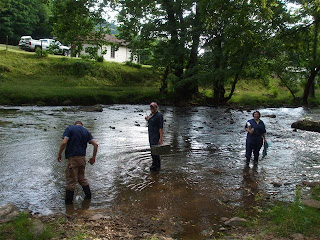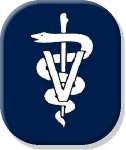
Before I begin retelling some of my grand large animal stories, I wanted to let everyone know the strange thing that happened this past weekend. Those of you who know me are aware of my fascination with reptiles and my possession of two snakes. One of my snakes is an adult, male ball python which I adopted from a coworker of mine back at an animal hospital in Maryland. He was in high school and his parents were forcing him to get rid of it for reasons I cannot recall. For the past three years, he's been a consistent eater and has been perfectly healthy. However currently, he hasn't eaten since February. While I know there are pathologic causes for anorexia in all species, I know that snakes will sometimes decide to just not eat for months for no reason, and most often it has to do with poor husbandry practices. Therefore, I've done my best to ensure a perfect light cycle, cleaned his tank more frequently, ensured the proper heat, etc. None of this worked......of course. Much to my surprise this past Sunday, while at my computer, I look over to my left in his cage and saw how he laid 6 eggs. Yeah, that's right........woops. The guy who previously owned him claimed to have had it sexed and told me it was male. The gender of the snake played no role in my adopting it, so I just believed him. Now she is back to eating regularly and all is well. Never a dull moment....never.
Now, onto another story. I mentioned in my previous post how I've done some traveling to farms with the huge food animal practicioner. On the same day as the previous story, we got a call to a beef cattle farm where there was supposedly a lame cow (i.e. it was limping). We arrived at the farm to find out that the farmer was certainly correct in his assessment because she wasn't putting any weight on one of her hind limbs. Since the herd was (at that moment) at the edge of the pasture where it borders with a forest, the clinician wanted to attempt lassoing her without sedation and tying her to a tree long enough to place a halter on her. She would have nothing to do with this and promptly darted away whenever he made an attempt. Then came plan B.......the dart gun. The clinician spent a few minutes assembing the dart and loading the gun, only to approach the cow, fire the gun, and have the dart bounce off of her thigh/hip. There is a reason footballs and shoes are made from cows, folks :). After another failed attempt and a dart flying into the woods, the cow caught onto the act and started to run when we came within 30 feet. To compensate for only having two legs, the clinician decided to drive along side the cow, lean out the window, and dart her. Again.....::ping::!!! Having given up on the dart gun, we decided to repeat the plan from the previous farm and lasso the cow while I drive the truck over to the clinician. I was better at driving the truck this time, but the rest of the damn herd wouldn't get out of my way! I kept honking at them and they wouldn't budge. Thankfully, the cow came back towards the truck where we tied the lasso to the truck long enough for the clinician to halter her and tie her to a fencepost.
After perfoming a physical exam, which did include rectal palpation, we discovered that she had "cancer". She had an enormous kidney and a huge mass on the inside of her pelvis, which is most consistent with lymphosarcoma, the most common internal cancer of cattle. I was hoping that with all the effort we went through to catch her that we'd at least be able to help her. What's worse is that the owner cannot sell her for slaughter because cancer automatically causes the entire carcass to be condemned, so all he could do legally is have her slaughtered for his own consumption (if he wished).
Oh, and before I forget, you're probably wondering what's the deal with the picture in the post. The other morning, an equine clinician went out on an early morning call to a local horse ranch (before the students arrived at school). While there, she left one of the rear doors open on the truck and the chicken hopped up on the floor of the backseat. The clinician closed the door without looking inside, and the chicken didn't make a sound the whole ride back to the school where she was discovered with much surprise and laughter. "Henrietta" was later picked up by her owner who found the whole thing as hilarious as we did.












